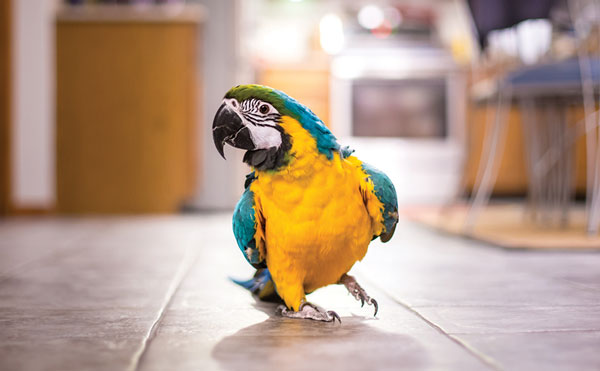
While pets can be a wonderful addition to your family, it is important to consider several things before making that commitment. Some initial questions include: Is anyone in your family allergic to certain animals? What type of pet will mesh with the various personalities in your family? Do you have a yard or space in which a pet can play? Plus, do you have the time and money required to care for a pet? After you’ve answered those important questions, let’s look at how to best find a new pet.
Although you may have a particular breed of pet in mind, it is worthwhile to first consider adopting from a local animal shelter or rescue facility, where millions of animals are surrendered each year. Cats and kittens make up a large portion of pet rescue populations, but dogs, rabbits, birds, guinea pigs and more can also be found. Many shelters have websites and social media pages showcasing the available animals.
A significant amount of medical care is often provided by shelters before adoptions, including spay/neuter surgeries, initial vaccinations, flea/tick/heartworm disease prevention and sometimes even microchipping. The adoptions themselves can be free or low-cost — just watch for adoption events, which have become popular in many communities. They are often hosted at places like Petco or PetSmart, by your local rescue programs.

A lesser-known benefit to adoption is the shelter will often provide long-term resources for you and your pet. Behavior support, landlord negotiations and even food assistance, should you need it, are some of the ways a shelter may be available to you post-adoption. Check with your local facility to learn all the perks they may offer. Sometimes, shelter workers will even recommend which pets best fit your family based on a simple survey of your lifestyle! It may take a few visits to find that perfect companion, but patience is sure to pay off in the form of a loving new furry friend.
According to humanesociety.org, decades of advocacy have made pet adoption more popular than ever, and the number of animals euthanized each year is at an all-time low. But, there are still thousands in need of a home each year. Adopting these animals is one way to fight puppy mills, factory-style breeding facilities that house moms and their puppies in deplorable conditions with little to no care. Dogs bought at pet stores, online, through classified ads or at flea markets are often products of puppy mills, according to the site. Should you decide that adopting from a shelter/rescue is still not right for you, shelter workers can sometimes be a resource for other humane sources of finding a pet.
Before bringing an animal home, it is helpful to write down costs associated with pet ownership to ensure your budget can handle it. From medical and dental care to potential health emergencies, pet owners can expect some annual costs. Ongoing expenses include food and grooming supplies, not to mention collars, leashes, bedding, toys, etc. Training and exercise may be things pet owners can handle themselves, but be sure to budget for those, as well, if you are unable to manage them.

If your family thinks it can afford a pet, there are still steps to take before bringing one home. Gather those items for which you’ve budgeted and prepare a storage location for them, along with a safe space just for your pet, whether that is a crate, a fishbowl, bird cage or a comfy bed. Store away any items a young animal might damage or that might hurt them.
Have a family discussion about who is responsible for which of the new pet’s needs, from exercising and feeding to training. Determine who outside the family can help when you are away — a trusted family member or neighbor — who you can introduce to your pet in advance.
Plan when and how it will be best to bring your pet home. Will someone be around all day for at least a few days to care for them while they acclimate to their new space? Make a vet appointment (if not adopting from a shelter that provides those services), making sure all vaccinations are complete, spaying/neutering is done, and microchipping is handled. Get started on obedience training right away by either researching online yourself or hiring a professional. With these tips in mind, you’ll be better prepared to successfully add a new pet to the family.
Sources:
1. https://www.humanesociety.org/resources/top-reasons-adopt-pet.
2. https://www.petakids.com/save-animals/dog-adoption-guide/.
3. https://www.hillspet.com/dog-care/new-pet-parent/ten-things-to-do-after-adopting-a-dog?lightboxfired=true#.
Written by Angel Morris

You must be logged in to post a comment.